Homilopsocidea
Emilie Bess and Kevin P. Johnson


This tree diagram shows the relationships between several groups of organisms.
The root of the current tree connects the organisms featured in this tree to their containing group and the rest of the Tree of Life. The basal branching point in the tree represents the ancestor of the other groups in the tree. This ancestor diversified over time into several descendent subgroups, which are represented as internal nodes and terminal taxa to the right.

You can click on the root to travel down the Tree of Life all the way to the root of all Life, and you can click on the names of descendent subgroups to travel up the Tree of Life all the way to individual species.
For more information on ToL tree formatting, please see Interpreting the Tree or Classification. To learn more about phylogenetic trees, please visit our Phylogenetic Biology pages.
close boxIntroduction
Infraorder Homilopsocidea contains ten families: Bryopsocidae, Calopsocidae, Ectopsocidae, Elipsocidae, Lachesillidae, Mesopsocidae, Peripsocidae, Philotarsidae, and Pseudocaeciliidae, and Trichopscidae. These families comprise about 90 genera and 1500 species worldwide.
Members of this infraorder are very diverse morphologically and biologically.
Characteristics
Synapomorphies
(from Yoshizawa 2002):
- Female:
- Egg guide extends from the dorsodistal margin of the subgenital plate.
- Dorsal valve of the gonapophyses is swollen dorsally.
General Characters
(from Yoshizawa 2002):
- Head:
- Head usually has a rounded vertex, except sharply pointed in Calopsocidae.
- Postclypeus is usually well bulged.
- Epistomal suture with or without well developed internal ridge.
- Anteclypeus varies.
- Eyes are usually much larger on males than on females.
- Ocelli are present and usually clustered on weakly developed tubercle.
- Mandibles are short, with rounded outer margin (except Calopsocidae with somewhat angled outer margin).
- Lacinial tip is usually bicuspid.
- Galea is usually flattened.
- Labial palpi are rounded.
- Thorax:
- Prothorax is less bulged dorsally than in other Psocomorpha.
- Pterothorax is strongly bulged dorsally.
- Mesothorax has a broad precoxal bridge and narrow trochantin.
- Metaepisternum has a broad membranous region.
- Wings:
- Forewing varies in coloration and markings.
- Posteroproximal corner of forewing is smoothly rounded.
- Forewing venation is generally of Caecilius-type.
- Hindwing has a rounded posteroproximal corner.
- Hindwing vein Sc is faint.
- Male: Genitalia vary; phallosome is complete.
- Female genitalia:
- Subgenital plate usually has a distal projection extended from dorsal margin.
- Gonapophyses are usually complete:
- Dorsal valve is swollen dorsally, usually with a subapical ventral process.
Discussion of Phylogenetic Relationships
Monophyly of Infraorder Homilopsocidea is uncertain. Morphological data support monophyly based on the synapomorphic characters listed under Characteristics (Yoshizawa 2002). Molecular data, however, divide the infraorder: one clade contains families Calopsocidae, Philotarsidae, and Psedocaeciliidae, and a series of small clades (sister to Infraorder Caeciliusetae) contain families Ectopsocidae, Lachesillidae, Elipsocidae, and Mesopsocidae (Johnson et al. 2004). Further work is needed to clarify relationships within the infraorder.
References
Johnson, K. P. & E. L. Mockford. 2003. Molecular systematics of Psocomorpha (Psocoptera). Systematic Entomology 28: 409-40
Johnson, K. P., K. Yoshizawa, and V. S. Smith. 2004. Multiple origins of parasitism in lice. Proceeding of the Royal Society of London B 271: 1771-1776.
Lienhard, C. and C. N Smithers. 2002. Psocoptera (Insecta) World Catalogue and Bibliography. Muséum d'Histoire Naturelle, Geneva, Switzerland.
Mockford, E. L. 1993. North American Psocoptera (Insecta). Gainesville, Florida: Sandhill Crane Press.
Mockford, E. L. 2005. Order Psocoptera: Psocids. Pp. 341-355 in C. A. Triplehorn and n. F. Johnson (eds.) Borror and DeLong's Introduction to the Study of Insects. Belmont, California: Thomson Publishing.
Smithers, C. N. 1996. Psocoptera. Pp. 1-80, 363-372 (Index) in A. Wells (ed.) Zoological Catalogue of Australia. Vol. 26. Psocoptera, Phthiraptera, Thysanoptera. Melbourne: CSIRO Publishing, Australia.
Yoshizawa, K. 2002. Phylogeny and higher classification of suborder Psocomorpha (Insecta: Psocodea:'Psocoptera'). Zoological Journal of the Linnean Society 136: 371-400.
Title Illustrations

| Scientific Name | Mesopsocus unipunctatus |
|---|---|
| Specimen Condition | Live Specimen |
| Identified By | K. Yoshizawa |
| Sex | Female |
| Life Cycle Stage | micropterous adult |
| View | anterolateral |
| Size | 3mm |
| Copyright | © 2006 Kazunori Yoshizawa |
| Scientific Name | Heterocaecilius solocipennis |
|---|---|
| Location | Japan |
| Specimen Condition | Live Specimen |
| Identified By | K. Yoshizawa |
| Life Cycle Stage | adult |
| View | lateral |
| Size | 3mm |
| Copyright | © 2006 Kazunori Yoshizawa |
| Scientific Name | Ectopsocus |
|---|---|
| Location | Boxborough, Ma. |
| Comments | 11/26/2006 |
| Specimen Condition | Live Specimen |
| Life Cycle Stage | nymph |
| View | dorsal |
| Copyright | © Tom Murray |
About This Page
Emilie Bess

Illinois Natural History Survey, Champaign, Illinois, USA
Kevin P. Johnson

Illinois Natural History Survey, Champaign, Illinois, USA
Correspondence regarding this page should be directed to Emilie Bess at
bess@inhs.uiuc.edu
and Kevin P. Johnson at
kjohnson@inhs.uiuc.edu
Page copyright © 2009 Emilie Bess and Kevin P. Johnson
All Rights Reserved.
- First online 25 March 2009
- Content changed 25 March 2009
Citing this page:
Bess, Emilie and Kevin P. Johnson. 2009. Homilopsocidea. Version 25 March 2009 (under construction). http://tolweb.org/Homilopsocidea/14479/2009.03.25 in The Tree of Life Web Project, http://tolweb.org/




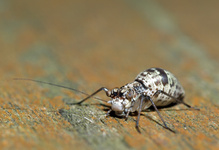
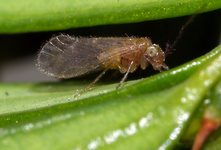
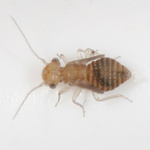
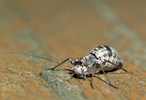

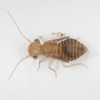

 Go to quick links
Go to quick search
Go to navigation for this section of the ToL site
Go to detailed links for the ToL site
Go to quick links
Go to quick search
Go to navigation for this section of the ToL site
Go to detailed links for the ToL site